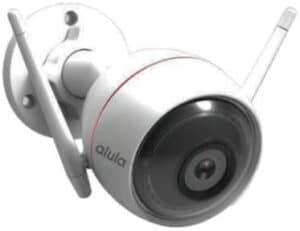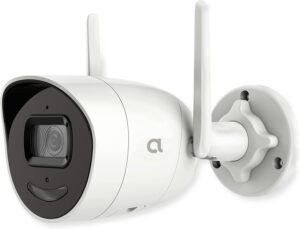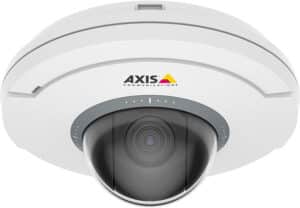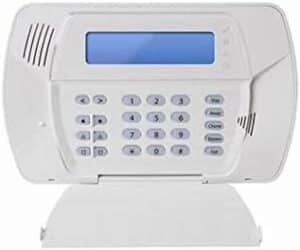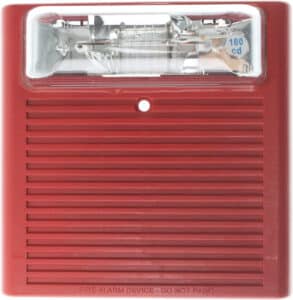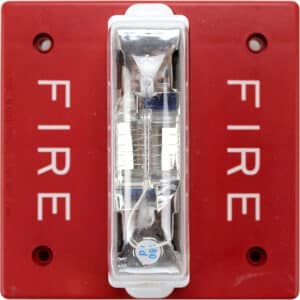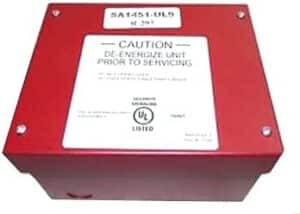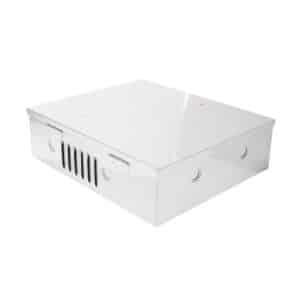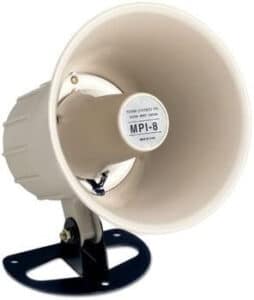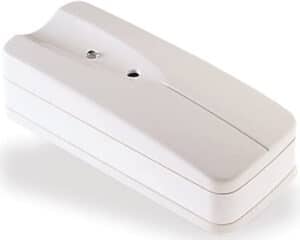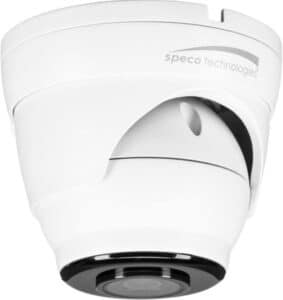As burglaries and home invasions continue to rise, homeowners are increasingly turning to home security systems to protect their family and property. But what happens when that system stops working? Panic sets in, leading homeowners to frantically search for solutions or even opt for expensive repairs, without realizing that they could have solved the problem themselves.
In this article, we will provide expert home alarm system troubleshooting tips to help you fix common problems, saving you time and money while keeping your home and loved ones safe and secure.
Read on to learn how to become a DIY home security expert and avoid unnecessary headaches.
Table of Contents
Understanding the Basics of Home Alarm Systems
Home alarm systems are designed to keep your home and family safe by alerting you to potential security breaches, such as break-ins, fires, or carbon monoxide leaks. These systems typically consist of a control panel, various sensors, and a monitoring service, which communicates with the sensors and contacts the appropriate authorities when an alarm is triggered. Understanding the basics of how your home alarm system works is essential in maintaining its effectiveness and addressing any issues that may arise.
One key component of a home alarm system is the control panel, which serves as the “brain” of the system. It communicates with sensors placed throughout the home, such as door and window contacts, motion detectors, glass break detectors, and smoke or carbon monoxide sensors. When a sensor is triggered, it sends a signal to the control panel, which then activates an alarm and sends a signal to the monitoring company.
The monitoring company is responsible for contacting the appropriate authorities (such as the police or fire department) in response to an alarm. They may also attempt to contact you to verify the alarm before dispatching emergency services. This is why it’s essential to keep your contact information up-to-date with your monitoring company.
Common Issues with Home Alarm Systems and How to Troubleshoot Them
There are several common issues that can cause a home alarm system to malfunction. Some of these issues include false alarms, sensor problems, connectivity issues, and power outages. In this section, we’ll discuss how to troubleshoot these common problems and get your home alarm system back up and running.
False alarms can be caused by a variety of factors, such as improperly installed sensors, environmental factors (such as pets or strong wind), or even user error. To address false alarms, check to ensure that all sensors are properly installed and functioning, and consider adjusting their sensitivity settings if necessary.
Sensor problems can occur when a sensor is damaged, has a dead battery, or is experiencing interference. To troubleshoot sensor issues, first, try replacing the battery (if applicable) and ensuring that the sensor is securely mounted. If the problem persists, it may be necessary to replace the sensor entirely.
Connectivity issues between your home alarm system and the monitoring company can be caused by a variety of factors, such as a faulty control panel, issues with your phone line or internet connection, or even a problem on the monitoring company’s end. To address connectivity issues, first, try resetting your control panel and ensuring that your phone line or internet connection is functioning properly. If the problem persists, contact your monitoring company for further assistance.
How to Reset Your Home Alarm System
Resetting your home alarm system can help resolve many common issues, such as false alarms or connectivity problems. To reset your system:
- Locate the control panel and find the “reset” or “power down” button. This button may be labeled differently depending on the brand and model of your system.
- Press and hold the reset button for a few seconds, then release it. Your system should power down momentarily before restarting.
- Allow your system to reboot and reconnect to the monitoring company. This may take a few minutes.
- Test your system to ensure that it’s functioning properly. If the issue persists, contact your monitoring company for further assistance.
How to Test Your Home Alarm System to Ensure it Works Properly
Regularly testing your home alarm system is crucial to ensuring its effectiveness. To test your system:
- Notify your monitoring company that you’ll be conducting a test. This will prevent them from dispatching emergency services during the test.
- Arm your system and wait for the exit delay to expire.
- Trigger each sensor individually, starting with door and window contacts, then moving on to motion detectors, glass break detectors, and smoke or carbon monoxide sensors. Ensure that the control panel acknowledges each trigger and that the alarm sounds.
- Disarm your system and contact your monitoring company to confirm that they received the alarm signals.
- Address any issues that were identified during the test, such as faulty sensors or connectivity problems.
How to Identify False Alarms and Stop Them from Occurring in the Future
False alarms are not only annoying but can also lead to fines and a reduced response from emergency services. To identify the cause of false alarms and prevent them in the future:
- Keep a log of when false alarms occur, noting any patterns or common factors.
- Inspect your sensors for damage or improper installation, and replace or adjust them as needed.
- Adjust sensor sensitivity settings to account for environmental factors, such as pets or strong wind.
- Educate all household members on the proper use of your home alarm system, including how to arm and disarm it and what to do in case of accidental activation.
The Role of Power Outages in Home Alarm System Malfunctions and How to Address Them
Power outages can cause your home alarm system to malfunction or become inoperable, leaving your home vulnerable. To address power outage-related issues:
- Ensure that your system is equipped with a backup battery, which will provide power during an outage. Check and replace the backup battery as needed, especially if you have an ADT system (replace adt battery periodically).
- Regularly test your system to ensure that it’s functioning properly, even during a power outage.
- Consider investing in an uninterruptible power supply (UPS) to provide additional backup power for your home alarm system.
Different Types of Sensors Used in Home Alarm Systems and How to Troubleshoot Them
Various sensors are used in home alarm systems, including door and window contacts, motion detectors, glass break detectors, and smoke or carbon monoxide sensors. To troubleshoot issues with these sensors:
- Door and window contacts: Ensure that the sensors are properly installed and aligned, and that there is no debris or damage preventing them from functioning. Replace the battery if applicable.
- Motion detectors: Check for environmental factors that may be causing false triggers, such as pets or strong wind. Adjust the sensitivity settings if necessary, and replace the battery if applicable.
- Glass break detectors: Ensure that the detector is properly installed and within range of the glass it’s meant to protect. Test the detector using an approved glass break simulator, and replace the battery if applicable.
- Smoke or carbon monoxide sensors: Test the sensors using the manufacturer’s recommended method, and replace the battery if applicable.
How to Fix Connectivity Issues Between Your Home Alarm System and Monitoring Company
Connectivity issues between your home alarm system and the monitoring company can leave your home unprotected. To fix these issues:
- Reset your control panel and ensure that your phone line or internet connection is functioning properly.
- If the problem persists, contact your monitoring company for further assistance. They may need to troubleshoot the issue on their end or send a technician to your home.
Addressing Low Battery Issues in Home Alarm Systems
Low battery issues can cause your home alarm system to malfunction or become inoperable. To address low battery issues:
- Check and replace the batteries in your sensors, control panel, and backup battery (if applicable).
- Regularly test your system to ensure that it’s functioning properly and that batteries are providing adequate power.
- Consider investing in a battery monitoring device to alert you when batteries need to be replaced.
Best Practices for Keeping Your Home Alarm System Running Properly
To keep your home alarm system running smoothly and effectively:
- Regularly test your system and address any issues that arise.
- Replace batteries in sensors, control panel, and backup battery (if applicable) as needed.
- Keep your contact information up-to-date with your monitoring company.
- Educate all household members on the proper use of your home alarm system.
How to Update Your Home Alarm System Software to Avoid Technical Issues
Regular software updates can help prevent technical issues and improve the functionality of your home alarm system. To update your system’s software:
- Consult your system’s user manual or contact your monitoring company for instructions on how to update the software.
- Follow the provided instructions to download and install the update, ensuring that your system remains connected to the monitoring company during the process.
- Test your system after the update to ensure that it’s functioning properly.
How to Deal with False Triggers by Your Home Alarm System
False triggers can be caused by a variety of factors, such as improperly installed sensors, environmental factors, or user error. To address false triggers:
- Ensure that all sensors are properly installed and functioning.
- Adjust sensor sensitivity settings to account for environmental factors, such as pets or strong wind.
- Educate all household members on the proper use of your home alarm system, including how to arm and disarm it and what to do in case of accidental activation.
Common Mistakes to Avoid When Troubleshooting Your Home Security Alarm System
When troubleshooting your home security alarm system, avoid these common mistakes:
- Failing to notify your monitoring company before conducting tests or making changes to your system.
- Neglecting to regularly test your system and address issues as they arise.
- Attempting to fix issues that are beyond your expertise, such as those involving electrical wiring or phone lines. In these cases, contact a professional for assistance.
Home Alarm System Troubleshooting Tips: Conclusion
Now that you’ve learned these expert tips for troubleshooting your home alarm system, you can take your home security to the next level. By following these tips, you can ensure your home remains safe and protected from potential threats.
At Xcessory Zone, we believe that everyone has the right to feel safe and secure in their own home. That’s why we offer a variety of e-commerce DIY home security products that make home security accessible and affordable for everyone. From motion sensors to smart locks, we’ve got everything you need to secure your home.
Don’t let a faulty home alarm system leave your home vulnerable to break-ins or other threats. Take action today and invest in a DIY home security system from Xcessory Zone. Shop our collection of home security products and enjoy the peace of mind that comes with knowing your home is always protected.
FAQs
What are the most common reasons for false alarms with home alarm systems, and how can they be prevented?
False alarms can be caused by a variety of factors, such as open doors or windows, low battery levels, pets, and environmental factors like windy days. To prevent false alarms, it’s important to regularly check and replace batteries, adjust the sensitivity of motion sensors, and consider installing pet-friendly sensors or placing sensors in areas where pets cannot reach them.
What are the primary benefits of a monitored home alarm system, and how does it differ from an unmonitored system?
A monitored home alarm system can provide 24/7 monitoring and emergency response, which can be particularly helpful when homeowners are away or unable to respond to an alarm. Unmonitored systems typically rely on a loud siren to alert neighbors or passersby of a potential break-in. Monitored systems also typically offer additional features, such as smoke and carbon monoxide detectors and remote access to control the system.
What should homeowners do if they experience a problem with their home alarm system, such as a malfunctioning sensor or keypad?
If a homeowner experiences a problem with their home alarm system, they should first consult the system manual or contact the manufacturer’s customer support for troubleshooting tips. If the issue cannot be resolved, it may be necessary to consult a professional alarm technician who can diagnose and repair any issues with the system. Regular maintenance and testing can also help prevent potential issues before they become larger problems.
Meet Our Partners!




